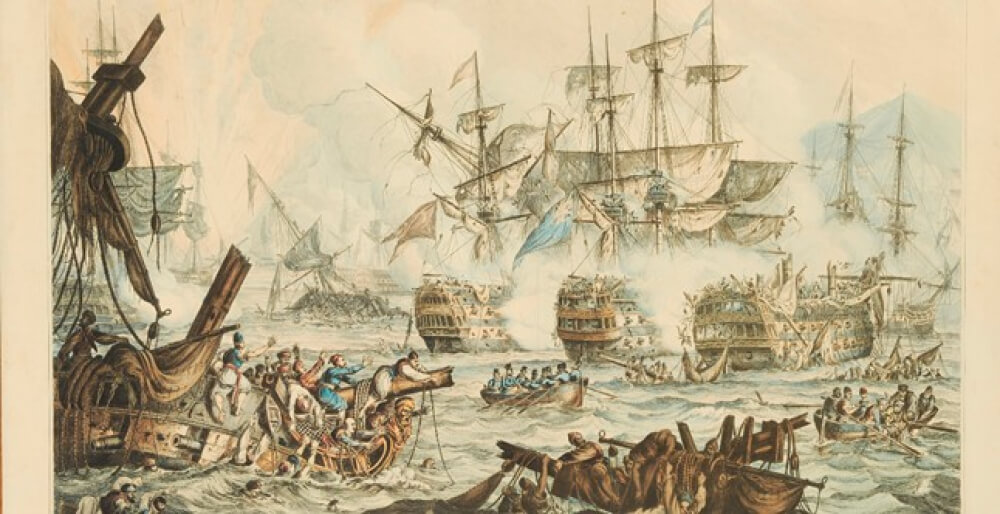Seige of Messolongi
The city of Messolongi played an important role in the Greek War of Independence, because of its strategic location at the mouth of the Gulf of Corinth. From the first months of the Revolution, the Greeks expelled the Ottoman forces and fortified the city. Omer Vrioni Pasha and Reşid Mehmed Pasha (also known as Kütahı) besieged Messolongi in 1822.On April 15, 1825, Kütahı returned with multiplied forces and he began a second siege. Later, he was further reinforced by the Egyptian army of Ibrahim Pasha. Despite repeated attacks, the city endured for a year, but hunger led the garrison and the entire population to a heroic exodus on the night of April 10, 1826, from which only a small number survived.The events of Messolongi constitute one of the most moving episodes of Greek history. The struggle of the besieged shocked the international public opinion, which saw in this a symbol of heroism and self-sacrifice.
Naval battle of Navarino
When in England Prime Minister was the philhellene George Canning, a mediation of the Great Powers (Britain-France-Russia) was achieved for solving the Greek problem. The Treaty of London (7/6/1827) provided for a truce between the belligerents and for the autonomy of Greece.Ottoman intransigence led to naval blockade of the Peloponnese and to the Naval Battle of Navarino (10/8/1827), where the combined fleets of the three Great Powers annihilated the Turkish-Egyptian one.The naval battle of Navarino was a decisive event for the Greek War of Independence. A French land expedition followed suit in August 1828 under the command of General Maison, and within two months succeeded in evacuating the Peloponnese of the Egyptian Army. In 1830 the foundation and Independence of the Greek State was recognized by the Great Powers.
Ship figureheads
The figureheads, decorative statues carved on the edge of the bow, were in Greek naval tradition the emblem of the ship. Remarkable works of popular woodcarving, they were usually crafted in shipyards of the islands by experienced shipwrights.Earlier, they had depicted mythical creatures of the sea, mermaids and religious figures.From the late 18th c., with the development of Greek shipping, they became a means of expression of the awakening national consciousness. The figureheads of the National Historical Museum’s collection depict heroes from ancient history and mythology.There are two types of man figures: the warrior in armor and the citizen with toga and band.Many of the figureheads are perforated by projectiles and often have colors in multiple layers under the black overcoat. Tradition says that they were painted black so as not to pose a challenge to the Turks during the crossing of the Bosporus Straits.
The press
The press played an important role during the Greek War of Independence, spreading news and statutes. Philhellenic European organizations sent printing presses in Greece, which were locally organized into wartime printing houses.With these were printed the first Greek constitutions and decisions of the Administration, newspapers and literary publications, such as the “Hymn to Liberty” by D. Solomos (1825) which later became the national anthem. The first Governor I. Kapodistrias organized the official press of the Greek state (1828-1831) on Aegina Island. At the same time, private printing houses appeared in Nafplion and Syros, inaugurating a new era in the field of information in the newly established Greek state.








